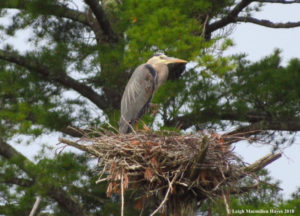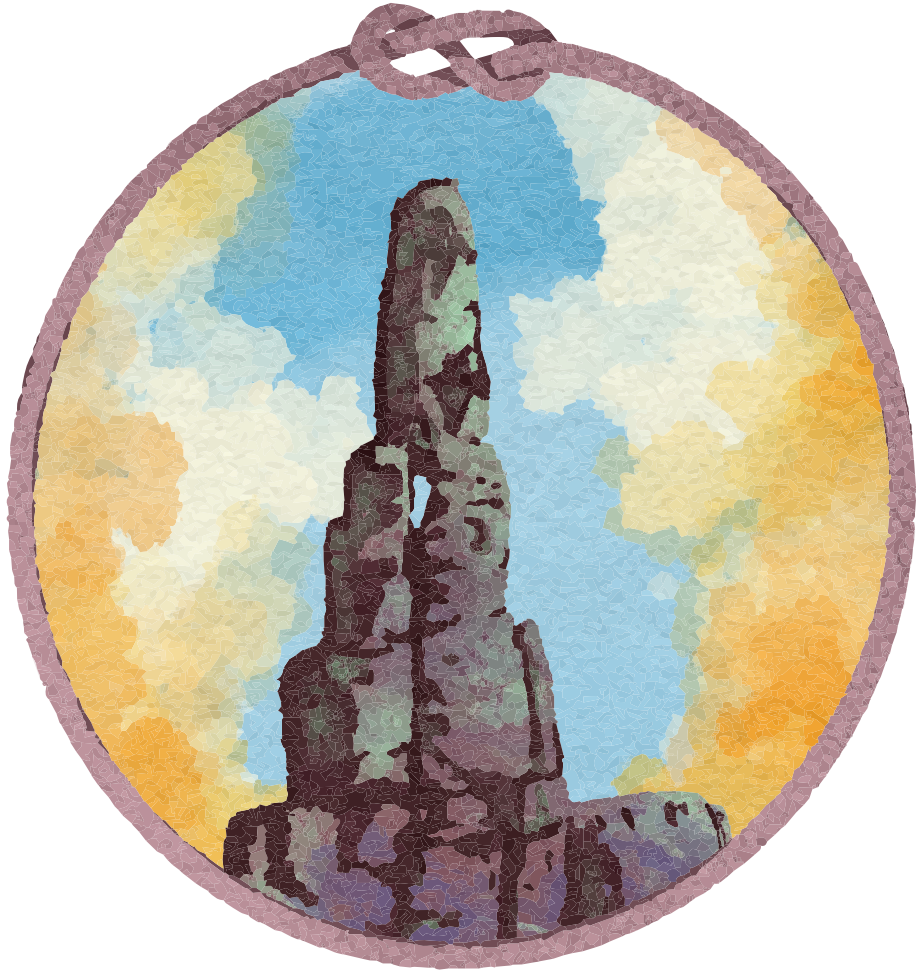
By: Mark Poelzer
If you’ve ever parked near the CCC parking lot in Devil’s Lake State Park, or group camped in the same area around mid-March or April – you might wonder if sinister acts are taking place high among the trees. Bellowing grunts, shrieks and barks echo into the stillness and startle even the most stoic among us. The noises are terribly hard to identify. Was that a dog barking high up in the tree? Does Wisconsin have Howler Monkeys? Is this why they call it Devil’s Lake? (This could be the real reason: https://
Every year during the spring we are serenaded at the CCC parking lot by the Great Blue Heron,(Ardea herodias). The stand of pine trees sitting around the CCC parking lot is a rookery for this species – a safe place to find mates, build nests and give birth. These birds find safety in numbers and altitude, nesting in tree-tops to avoid ground-dwelling predators. Their main enemies are other birds like eagles and vultures. Another commonly noted rookery in WI is located at Horicon Marsh – https://www.fws.gov/
A great blue heron can stand up to 4.5 feet tall and have a wingspan up to 6.5 feet! They fly up to 25 mph and hunt for things like fish and reptiles (even rodents) using their sharp beak. They are often incorrectly identified as cranes or egrets (though egrets are in the same family – a second cousin). An easy way to ID a great blue heron from a crane is to look at their neck during flight. Crane’s hold their neck out straight while heron’s fly with their long necks in an S-shape. Also, heron’s usually fly alone while crane’s fly with partners.
This time of year, you’re bound to see professional and amateur photographers setting up tri-pods to catch a close-up picture of these winged-beauties Keep an eye out for these special animals as you travel around Devil’s Lake and the CCC parking lot.

